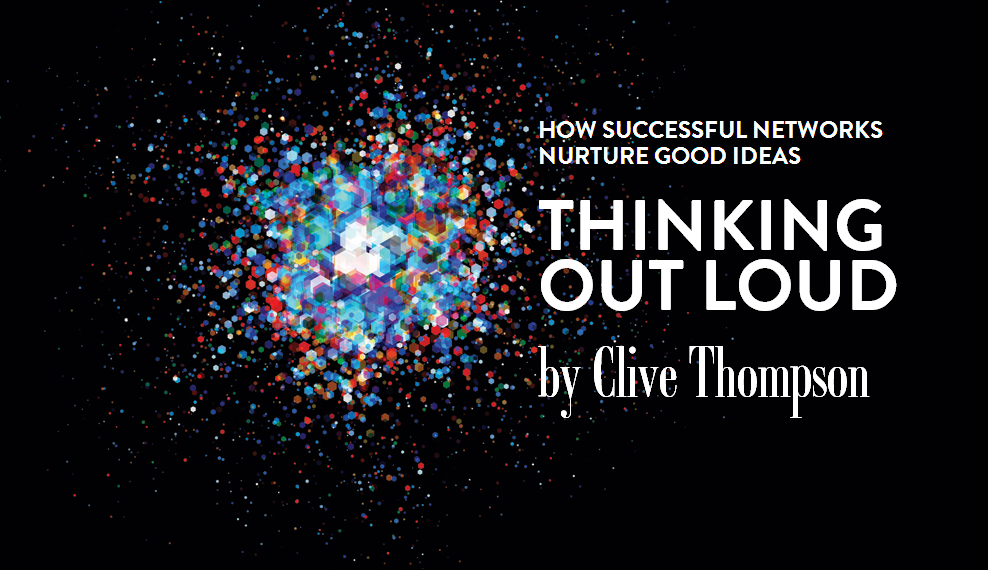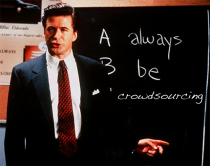What I’m Reading: On China, Typography, and The Power of Connected Networks
|
We live in a marvelous age of content discovery and learning.  Between platforms like the Khan Academy, traditional publications like the Financial Times, New Yorker, and the Atlantic, and an ever-growing presence (both digitally and in-person) of gatherings like TED, Davos, Zeitgeist and the like, as long as you have an Internet connection — and the curiosity to look for it — it has never been easier to access information.  But as I’ve touched on before, this ease of access has created a conundrum in and of itself in finding — and thinking through — what all these different pieces mean. Below are some things that caught my eye so far this week — what noteworthy events, talks, or reads have you come across?  Share your own in the comments below. Jon Huntsman on China and the US Whatever your political leanings may be, it’s hard to refute that Jon Huntsman is one of the most well-versed politicians on China today in Washington.  In this 22-minute talk at Zeitgeist Americas, Huntsman leads off the discussion on China and the US, and how two distinctly different approaches to leading shape the directions of the two countries.  For  China, who is decidedly driven by long-term strategies, and the US, who excels at executing short-term tactical decisions, it’s more important than ever for both to understand the perspectives that the other is coming from. In particular, as Huntsman notes, the next few months will be especially interesting to watch as China moves into its third plenum this November, where the new leadership team that assumed power last year will lay out in more detail plans around some the most pressing issues for China today: urbanization, moving from an export driven economy that is more focused on consumption, and the overarching theme of China’s social transition against a backdrop of widening inequalities.  China’s transition today is one that warrants much more than just any one post, book, or talk, but Huntsman’s talk here presents a good overview of some of the present issues at hand. Jon Huntsman was a former ambassador to China (2009 – 2011) and governor of Utah (2005 – 2009). As a private citizen, Huntsman was the CEO of Huntsman Corporation, a global chemical company started by his father, Jon Huntsman Sr. Typography and Culture: Why the Devil is in the Details How does typography influence and reveal culture? However subtle (or un-subtle), typography plays a key role in shaping the feel and identity of brands and societies.  In this 10-minute talk with world-renowned typographer and designer Erik Spiekrmann, he provides a fascinating lens into the history of the craft and how it’s evolved with the introduction of new content formats and mediums, and how typeface can reveal the sentiment of a society. How Successful Networks Nurture Good Ideas When the Internet first reached mass audiences, it was a marvelous framework to start storing all our information — to create nodes of reference that anyone could access.  As this information began to grow (exponentially so), it quickly became about finding ways to organize and find that information — giving birth to search engines like Altavista, Yahoo, and ultimately, Google.  Today, we find ourselves in another age of the Web, one that is as much about creating as it is about documenting.  On one hand, it’s about the rise of the shareable economy, with the growth of services like TaskRabbit, Airbnb, Lyft, Postmates, and the like. And on the other hand, it’s helped drive and enable a culture of collaboration and collective innovation.  In this piece from the current WIRED issue, contributing editor Clive Thompson discusses the merits of thinking out loud and the network effects the Internet has in giving way to serendipity.  In particular, Thompson cites the birth of Ushahidi, an open-source project that started as a way for users to automatically pins texts/e-mails from areas under distress directly onto Google Maps), as a prime example of this. Ushahidi, which is Swahili for “witness”, was an idea that came to Ory Okolloh, a blogger that started writing about corruption in Kenya in the early 2000s, during the heart of the Kenyan elections of 2007, when she received floods of tips of violent outbreaks throughout the country.  While she posted as many as she could on her blog, there were so many others she couldn’t always get to, and she wondered — out loud — whether it was technically possible to get these messages posted automatically to Google Maps.  A reader saw her post and connected her with a programmer he knew who was also deeply interested in connecting Kenyans to talk about the state of the country.  The two connected and within a few days, they had a functional Google Maps-based tool to automatically pin posts via text/e-mail/web form up and running. In the corporate world (where I’ve been thinking about this topic quite a bit), connected networks can help drive similar effects — when done right.  Across the board, there is a push to break down silos and to connect the dots (Yammer, an enterprise social network, uses the tagline “it’s a tool for rewriting your company’s culture” as a key premise of their business).  But just as it is with the public Internet, organizations need to create environments that allow for these “perfect storms” to occur. Employees should be allowed — and actively encouraged — to contribute, to become writers and commentators as much as they are consumers of content and media, and given multiple forums and occasions to express their ideas, think out loud, and connect, regardless of team or geography.  As with almost all topics, this one warrants a post (or a few) in and of itself, but I think the case that Thompson makes here is one that business executives should take heed of in growing their operations. Pop Culture: Lip Sync Battle with Joseph Gordon Levitt, Stephen Merchant and Jimmy Fallon And to end the note on a truly “epic” performance (according to this Gawker article,  “epic” is actually the most used term on the interwebs today), check out this battle of the ages lip-sync performance from Stephen Merchant, Joseph Gordon-Levitt, and Jimmy Fallon (10 minute video). If you’re short on time, skip ahead to the 8:15 mark to watch Joseph Gordon-Levitt’s epic performance of Nicki Manoj’s “Super Bass”. |



One Comment